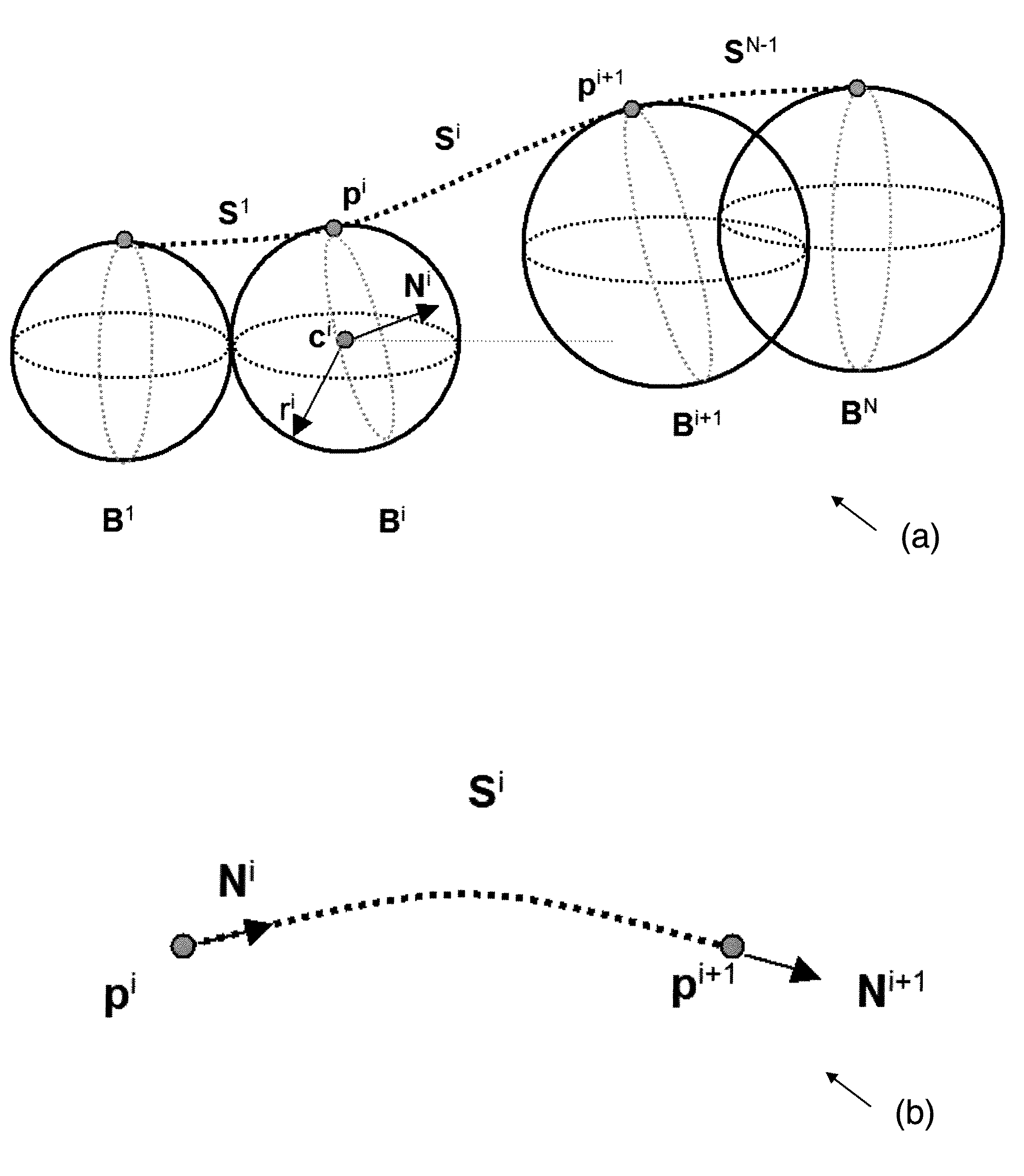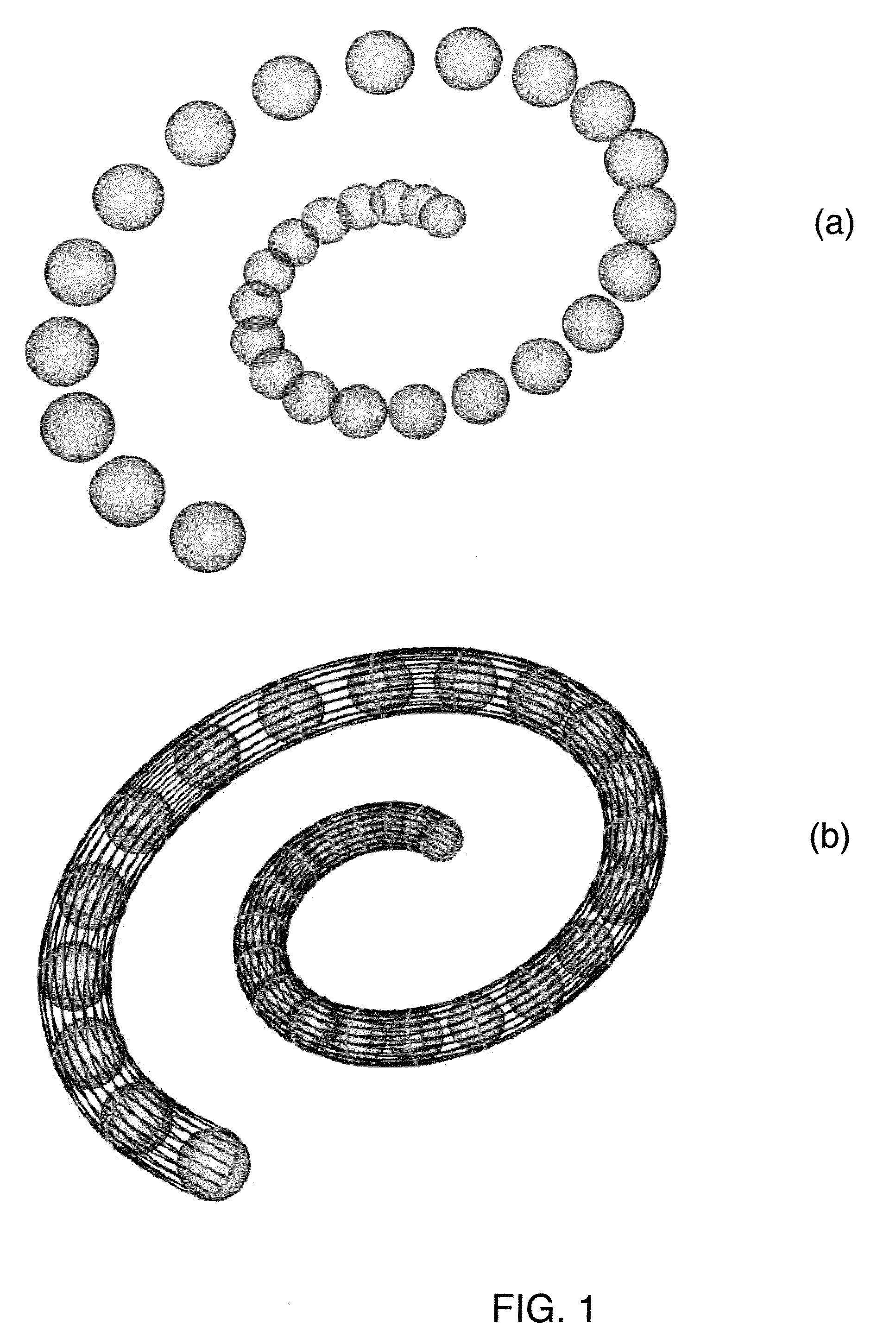3D ball skinning using partial differential equations for generation of smooth tubular surfaces
a technology of partial differential equations and skinning balls, applied in the field of three-dimensional (3d) ball skinning, can solve the problem that none of these existing methods provides optimally smooth skin
- Summary
- Abstract
- Description
- Claims
- Application Information
AI Technical Summary
Problems solved by technology
Method used
Image
Examples
Embodiment Construction
[0043]In an exemplary embodiment of the present invention, we are interested in modeling the geometry of a blood vessel that has been identified using Pearling as described by B. Whited, J. Rossignac, G. Slabaugh, T. Fang, G. Unal, Pearling: 3D Interactive Extraction of Tubular Structures from Volumetric Images, in: Interaction in Medical Image Analysis and Visualization, held in conjunction with MICCAI, 2007. Pearling is a ball packing algorithm that places numerous balls of different radii so that they fit snugly inside an imaged vessel. Given these balls, we would like to find a C1 skin that smoothly interpolates the balls. This surface can then be used for visualization of the blood vessel, simulation of blood flows using computational fluid dynamics, as well as measurements such as volume or surface area. We note that the problem of two-dimensional (2D) ball skinning was addressed in our paper, G. Slabaugh, G. Unal, T. Fang, J. Rossignac, B. Whited, Variational Skinning of an O...
PUM
 Login to View More
Login to View More Abstract
Description
Claims
Application Information
 Login to View More
Login to View More - R&D
- Intellectual Property
- Life Sciences
- Materials
- Tech Scout
- Unparalleled Data Quality
- Higher Quality Content
- 60% Fewer Hallucinations
Browse by: Latest US Patents, China's latest patents, Technical Efficacy Thesaurus, Application Domain, Technology Topic, Popular Technical Reports.
© 2025 PatSnap. All rights reserved.Legal|Privacy policy|Modern Slavery Act Transparency Statement|Sitemap|About US| Contact US: help@patsnap.com



